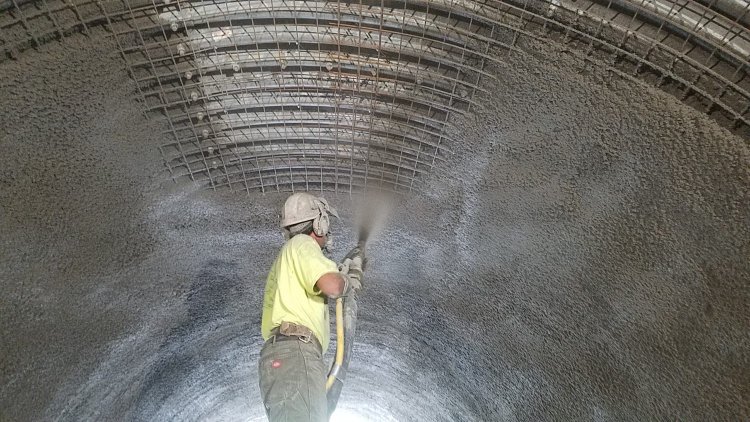With its large contribution to the economic growth of a country, the Construction Industry contributes to more than 14% of the overall global GDP, providing work opportunities to an approximate 7% of the workforce. A recent study on growth opportunities in the industry by Business Wire predicts the growth rate to reach $10.5 trillion by 2023.
While the pandemic was a major worldwide setback on operations considering the industry’s strong dependency on physical presence, experts in the field note that there is now an increased need to reimagine and adapt to a new normal. The construction industry is somewhat of an umbrella term that includes different companies, under categories of residential, non-residential, infrastructure, and industrial construction. With such wide categories, construction companies have an equally wide list of strategic plans to make their business profitable.
Through phases of planning, design, and execution, projects that are big-scale gather more profit opportunities. Construction companies, irrespective of their specialization make their earnings through the multiple services that they offer. The more complex a project is greater the need for specialized personnel, multidisciplinary teams, and heavy labour. With higher risk, effort, and time involved, profit margins are more. Some insights to keep in mind to make steady earnings are,
- Better bids when it comes to projects from tender
- Delivering work that has zero compromises on quality
- Working out a realistic cost analysis
- Accuracy about the material used to avoid unnecessary wastage
- Prioritizing marketing
Golden Pointers on Profitable Companies
Attention to Productivity
Productivity as an end product is the measure of output in direct relation to the input. For example, in terms of a construction company, if the output is 1000 sq. ft of flooring being done, then the input is the number of hours manually doing the job. Productivity plays a big role in controlling costs and keeping the project on schedule. This helps in giving maximum priority to productivity on the building site, and relevant processes.
While the goal of productivity is clear, the execution requires exact planning and scheduling of tasks, with good execution. It is also important to understand that even though getting the most out of the workers involved is undeniable, overtime work to satisfy deadlines shows 15% decreased productivity, going to a recent study. Planning buffer time for every stage of the construction phase will help take care of unexpected delays.
Setting Profit Goals
To ultimately make a profit on a project, it is essential to set realistic estimates. The famous ‘Business Builder’, George Hedley points out that one of the main problems in a construction company is not to have profit goals. He recommends having overheads, job costs, and sales goals distinctly written for different phases of the company’s timeline.
Having profit goals also helps perform better in creating better bids. Knowing and planning for long-term business profits allows the company to set goals for achievable revenue.
Marketing as a Power Tool
At the peak of this digital age, almost all sectors of businesses are making use of technology and social media for their gains. Adaptability, especially during post-pandemic times will be an important factor in making or breaking a business, and the construction industry is no different.
The use of marketing tools such as online and offline ads, and creating a strong social media presence can provide 3 important results,
- Increasing organic traffic to the website and social media pages
- Opportunities for free advertising
- Building a loyal community base
Driving organic traffic by search engine optimization equals potential leads and eyes on the company, and ultimately getting customers. Media presence on multiple platforms serves as a base for exposure to the company, and expansion opportunities. A loyal community base is an essential step for word-of-mouth sharing. As traditional as it sounds, it is extremely effective. Reviews and acknowledgment of work by customers bring great focus to the companies and play a big part in building trust.
Conscious Reduction of Wastage
Recent studies tell us that about 12% of the materials used in a construction project go to waste, and ultimately end up in a landfill. While the % might look fairly small for a single project, the same in the case of a big-scale project is humungous.
Not only is this unnecessary in terms of investment of resources, time, and labour, a huge loss of expenses, it also largely impacts the environment negatively. A few ways to provide solutions and take necessary action can be done by,
- Planning out expenses for material usage accurately starting with the initial cost estimate, and calculating the exact quantities of use
- Storing materials to prevent accidents, damage, and theft
- Spending time to creatively use leftover materials, in case of excess
Care for Tools of Use
The logic is simple. Maintenance costs time and money. However, they ensure smooth running of everyday work in the building site and, are of better use throughout their shelf life. Maintenance minimizes repairs and breakdowns, which helps the company avoid unnecessary time and money.
The process of maintenance can be streamlined by keeping a set of checklist guides that can be used each time, whenever necessary. Along with a checklist, employing a record for tools can keep the systems in check, along with noting down servicing and relevant activities. To keep the tools in check and establish a habit,
- Dust the tools and appliances after use
- Check for cords, jackets, and wires in proper inspection
- Make sure to tighten plugs and boards to avoid fluctuations
- Make sure all the appliances run in accordance with the manual, with their maintenance procedure in mind
- Set resources in terms of time, effort, and money
The Ultimate Roadmap to Profit Numbers
Earning Potential in Numbers
The exact earning and profit that a company makes are dependent on many factors. Profit as a component must be factored in from the beginning stages of quoting and estimation. The final quote that carries the signature of the parties involved must be very clear on the profits mentioned.
A company could make a profit in addition to what was already mentioned and planned, when the project is finished before the schedule, i.e., by being efficient. A common understanding is that a 10-15% profit margin is fairly expected and planned for, right from the initial stages of scheduling and execution.
Experts in the field point out that even while planning, it is important to take into consideration the unexpected cases of delays and accidents that can show up in the form of loss of time, effort, and money. The difficulty in putting a tag on the money value arises from different companies having an extremely different scale, expertise, work process, profit margins, preferences, and priorities.
Profitability in the Industry
While it is no easy feat to build a profitable business, renewed demands for construction are not only seen in the residential typology but are also extending to commercial, recreational, industrial, and institutional sectors.
With that being said, experts and experienced professionals make a point that niche-specific companies have significantly more chances for success and growth. This potential helps them develop a signature recognition from others in the industry, and can develop their services to ultimately make more profits.



